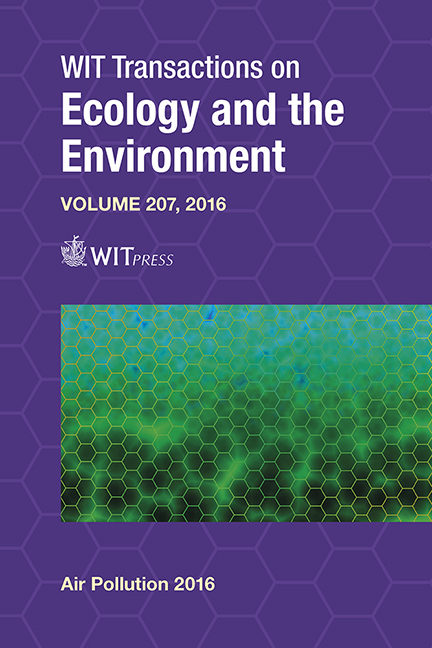Household Air Pollution In South African Low-income Settlements: A Case Study
Price
Free (open access)
Transaction
Volume
207
Pages
10
Page Range
227 - 236
Published
2016
Size
905 kb
Paper DOI
10.2495/AIR160211
Copyright
WIT Press
Author(s)
B. Language, S. J. Piketh, B. Wernecke, R. Burger
Abstract
Residential solid fuel combustion emission within low-income communities result in increased negative health impacts within these settlements. The Highveld is considered to be the industrial epicentre of South Africa as it houses 11 of the 13 coal-fired power stations situated within the country’s borders. The availability of low-cost coal within the area makes it the fuel of choice for heating and cooking purposes within low-income settlements. As a result residents of these settlements are continuously exposed to high concentrations of air pollutants. A paucity in data, on the impact of residential solid fuel combustion, exists since research is mainly focussed on industrial emission impacts. This paper aims to accurately quantify and characterise the mass concentrations of particulate matter experienced within both the indoor (PM4) and ambient (PM10, PM2.5) environments of KwaDela, a low-income settlement located on the South African Highveld. Furthermore, an attempt was made to link the indoor and ambient particulate mass concentrations, identify diurnal patterns and seasonal variations. KwaDela experiences high levels of particulate pollution, within both the indoor and ambient environment, as a result of domestic solid fuel combustion. Energy use varies seasonally with higher consumption of solid fuels during the winter leading to increased particulate loading. The concentrations of respirable particulate concentrations within the indoor environment are significantly higher than PM10 and PM2.5 experienced in the ambient environment. This indicates that the effect of respirable particulate matter, associated with solid fuel combustion in the indoor environment, has been underrepresented and thus its effect on health underreported.
Keywords
indoor, ambient, air quality, particulate matter, low-income settlements, South Africa





